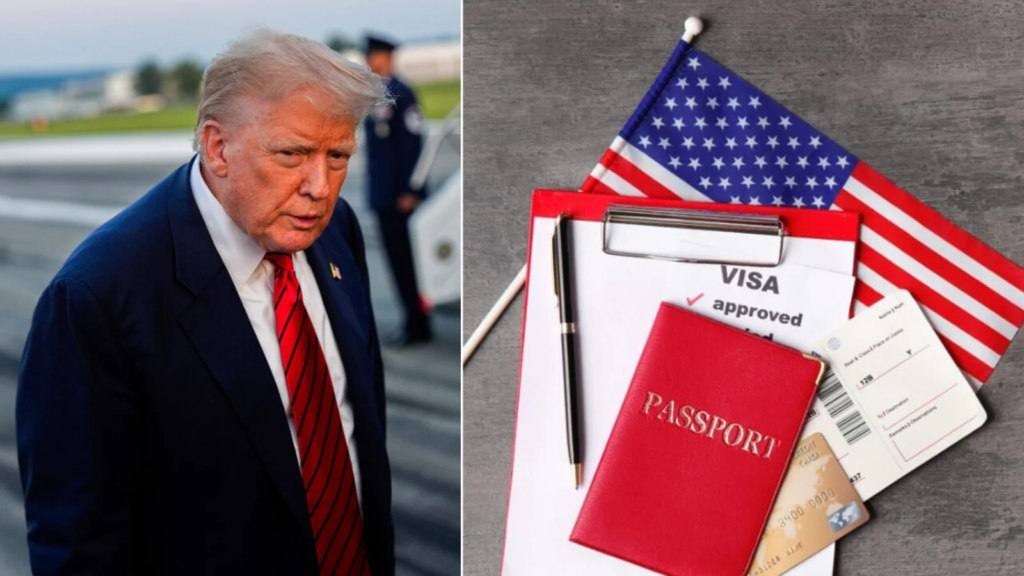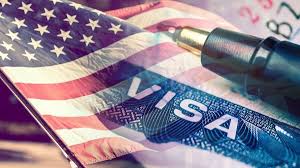In a move that has caught international attention, the US adds seven countries to visa bond list — a policy change that could affect visa applicants, sponsors, and travelers worldwide. If you or someone you know is from one of these nations or in the process of applying for a U.S. visa, this shift may carry practical implications. In this article, we’ll explore what it means, who is impacted, and how you can navigate this update with confidence.
What Does “Adding to Visa Bond List” Mean?
When the US adds seven countries to visa bond list, it means that citizens from those countries, or sponsors petitioning for them, may now be required to post a financial bond as part of the visa process. The bond acts as a guarantee — a kind of financial security — ensuring compliance with visa conditions (such as leaving the country after the authorized stay). This policy is often used to manage higher perceived risk of overstay or visa violation from certain origins.
A visa bond does not deny you entry or a visa outright, but it adds a hurdle: financial liability, procedural complexity, and a new threshold you must meet. It’s a signal that the U.S. government is recalibrating its risk assessment.
Why Did the US Add Countries Now?
The decision by the U.S. authorities to add these nations reflects multiple motivations:
- Risk management – The U.S. may believe applicants from these countries have historically posed higher overstay or noncompliance risks.
- Diplomatic or foreign policy recalibrations – Sometimes such moves respond to broader bilateral issues.
- Immigration control strategies – Requiring bonds can serve as a deterrent to risky or fraudulent visa applications.
- Revenue / enforcement tools – The bond requirement gives authorities a financial lever if conditions aren’t met.
Whatever the motives, the change signals that individuals connected to those countries will now operate under stricter oversight.
Which Countries Are Affected (and Are You Impacted?)
Because the US adds seven countries to visa bond list, it is vital to pinpoint which nations made the cut. The identities of those seven may vary depending on announcements by U.S. immigration authorities or the State Department. If your nationality, or that of someone you support (e.g. as a sponsor), is among them — you are directly impacted.
People who might be affected include:
- Visa applicants (tourist, student, work, immigrant) from those countries
- Petitioning sponsors (familial or employers)
- Immigration consultants and attorneys working with nationals of those countries
- Travelers planning U.S. trips or relocations
Even if you’re not from one of the added countries, if you’re sponsoring someone from there, you will need to be aware and maybe prepare for bonding costs.
How the Bond Requirement Works
Once the US adds seven countries to visa bond list, the visa processing system can require:
- A specified bond amount (could be thousands of dollars)
- Proof of liquidity or creditworthiness
- Conditions under which the bond will be forfeited (for example, failure to depart in time)
- Terms of refund after conditions are satisfied
Typically, the bond is held by a U.S. government agency or escrow until the visa holder fulfills their obligations. If the visa holder violates terms (stays beyond permitted time, works illegally, etc.), the bond could be forfeited.

Are You Affected? Steps to Check
If you want to know whether you are affected by this change, here’s what you can do:
- Check the official list — The U.S. Department of State or USCIS should publish the seven countries added.
- See your visa type — Tourist, student, immigrant visa requirements differ; bonds may apply to some but not all.
- Check your sponsoring entity — If a family member or employer sponsors you, bond liability may fall partly on them.
- Consult a legal or immigration adviser — They can interpret whether your case triggers a bond requirement.
- Monitor updates — Sometimes such additions are rolled out gradually or with regional exceptions.
What You Should Do Now
Because the US adds seven countries to visa bond list, you may need to adapt your planning and preparation. Here’s how:
- Budget for extra financial burden — Set aside enough funds for a potential bond.
- Prepare financial documentation — Proof of assets, income, or credit worthiness may be required.
- Strengthen your case — Show ties to home country, strong purpose of visit or study, and compliance history.
- Engage an immigration attorney or consultant — Especially if your case is complex.
- Consider alternate routes or timing — If bond policies deter your application now, wait or seek different visa categories.
Real-Life Scenarios: How People Could Be Affected
Imagine Sarah, a student from Country X (one of the newly added ones). She planned to study in the U.S., had her acceptance letter ready, and financial support confirmed. But because her country is now subject to visa bonds, she might have to post a bond of $5,000 or more. This extra financial barrier may delay her visa approval or push her family to seek alternate funding.
Or think of Raj, sponsored by his employer in the U.S. As a citizen of one of those seven countries, his employer might now need to guarantee a bond. That adds risk and paperwork for the employer, who may hesitate.
These examples illustrate how the change can ripple across personal, educational, and professional plans.
Policy, Diplomacy & International Reactions
When the US adds seven countries to visa bond list, it often triggers diplomatic responses from those countries. They may protest, retaliate with reciprocal measures, or negotiate exemptions. Media, immigrant advocacy groups, and human rights organizations might raise concerns about fairness, discrimination, or undue burden on vulnerable applicants.
Over time, the U.S. may refine or roll back bond requirements depending on compliance data, diplomatic pressure, or changes in administration. So this list might not be permanent.
FAQs About the Visa Bond Addition
Does every visa type require a bond now?
Not necessarily. Specific visa categories or high-risk applicants may be targeted more than tourist visas or low-risk cases.
Is the bond refundable?
Yes — if you comply with all visa terms (leave on time, obey rules), the bond amount is usually refunded.
Can the bond be waived?
In certain cases, exemptions or waivers might apply — for example, for government scholars, diplomats, or under humanitarian grounds.
When does the rule take effect?
Typically, after an official announcement, but it may roll out gradually. Always check effective dates.
Can the list expand in the future?
Yes — the U.S. may add or remove countries depending on policy, bilateral relations, or compliance data.
Looking Forward: How to Stay Prepared
Given that US adds seven countries to visa bond list, here are steps to stay proactive:
- Monitor U.S. immigration updates via official websites
- Maintain clean travel/immigration records so authorities view you as low risk
- Build strong supporting documentation for visa applications
- Stay financially transparent and ready in case bond is demanded
- Be flexible in travel or study plans to adapt if delays or hurdles arise
Final Thoughts
The announcement that US adds seven countries to visa bond list is a significant shift in immigration policy with consequences for thousands of prospective visa applicants and their sponsors. While it raises barriers, with the right preparation, guidance, and financial planning, many people can still proceed successfully. If your country is among those added, act now: check official sources, budget for bonds, and work with knowledgeable advisors.
Do follow us: Instagram
Read More: Gulf Air Expands UK Connectivity with New London Gatwick Service



